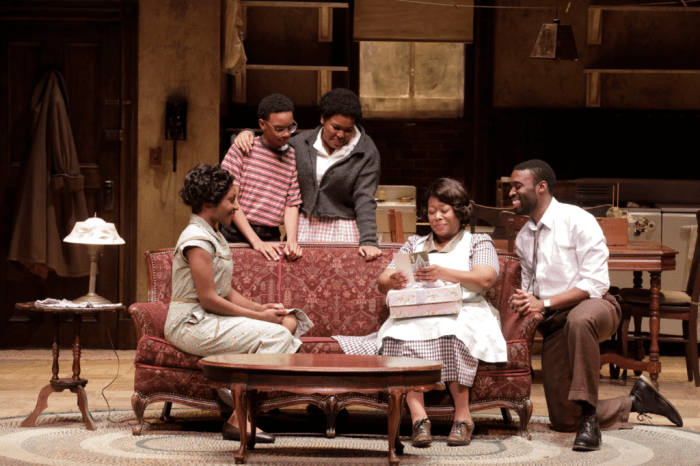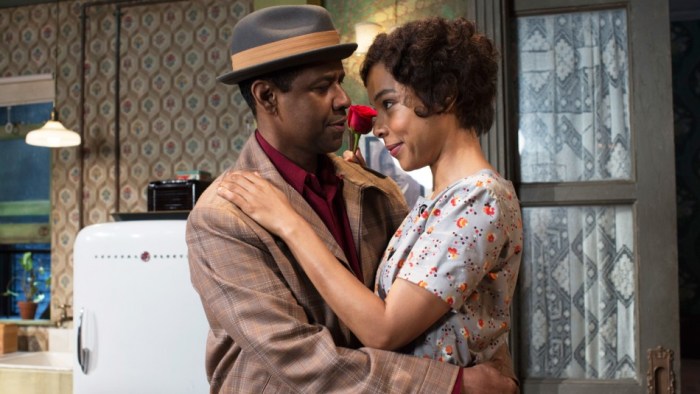Raisin in the sun script – Embark on a journey through ‘A Raisin in the Sun’, a seminal play that delves into the complexities of family, identity, and the pursuit of dreams amidst the challenges of racism and economic inequality. This literary masterpiece offers a poignant and thought-provoking exploration that continues to resonate with audiences today.
From the transformation of Walter Lee to the aspirations of Beneatha Younger, each character’s journey unfolds with raw emotion and authenticity, inviting us to reflect on the universal themes of family, ambition, and the search for meaning.
Character Development

Lorraine Hansberry’s “A Raisin in the Sun” portrays a family grappling with poverty, societal expectations, and dreams deferred. The play witnesses the evolution of Walter Lee Younger, Beneatha Younger, and Ruth Younger as they navigate these challenges.
Walter Lee Younger
Walter Lee’s journey is marked by frustration and determination. Initially portrayed as a dreamer with grandiose plans, his ambitions clash with the harsh realities of life. As the play progresses, Walter’s desperation leads him down a dangerous path, yet he ultimately rediscovers his dignity and strength.
Beneatha Younger
Beneatha is a young woman driven by a thirst for knowledge and self-discovery. She challenges societal norms and embraces her African heritage, navigating the complexities of her identity while seeking a sense of purpose and belonging.
Ruth Younger
Ruth, the matriarch of the family, embodies resilience and sacrifice. Despite facing adversity, she remains the glue that holds her family together. Her unwavering love and determination provide a beacon of hope amidst the challenges they face.
Family Dynamics

The Younger family in “A Raisin in the Sun” is a complex and dynamic unit, facing challenges and tensions that stem from generational differences, financial struggles, and the pursuit of the American Dream. Their relationships are shaped by love, loyalty, and a shared desire for a better life, yet these bonds are also tested by the pressures of society and their own individual aspirations.
Generational Conflicts
- Walter and Ruth:Walter, the patriarch, represents the older generation, with traditional values and a strong work ethic. Ruth, his wife, is more pragmatic and realistic, understanding the limitations they face. Their conflicting views on how to spend their inheritance highlight the generational divide within the family.
- Walter and Beneatha:Beneatha, Walter’s daughter, represents the younger generation, with a thirst for knowledge, independence, and a desire to break free from societal expectations. Walter’s disapproval of her career aspirations and her decision to embrace her African heritage creates a significant rift between them.
Pursuit of the American Dream
The Younger family’s pursuit of the American Dream is a driving force in their lives, yet it also creates tensions within the family.
The “Raisin in the Sun” script has been extensively analyzed for its exploration of themes such as racial inequality and the pursuit of the American Dream. While not directly related to AP Human Geography Unit 4 FRQ, which focuses on global patterns of migration and urbanization ( ap human geo unit 4 frq ), the play does offer insights into the experiences of African Americans in the mid-20th century, a population often overlooked in discussions of global migration.
- Walter’s Obsession:Walter’s obsession with acquiring wealth and status as a means of achieving the American Dream leads him to make reckless decisions that jeopardize the family’s financial security.
- Beneatha’s Idealism:Beneatha’s idealism and her belief in the power of education and self-reliance clash with Walter’s materialistic aspirations.
Family Unity
Despite the challenges and tensions they face, the Younger family remains a close-knit unit, bound together by love and a shared desire for a better life. Their unwavering support for one another, particularly during moments of crisis, demonstrates the strength of their familial bonds.
Social Commentary: Raisin In The Sun Script

A Raisin in the Sundelves into the multifaceted social issues that plagued African Americans in mid-20th century America. The play’s raw depiction of racism, economic inequality, and the struggle for equality resonates powerfully with contemporary social issues, making it a timeless commentary on the human experience.
Racism
Racism is a pervasive force in the play, shaping the characters’ lives and aspirations. The Youngers face constant discrimination in their search for a decent home and fair treatment. They are denied housing in white neighborhoods, insulted by white strangers, and subjected to police harassment.
The play exposes the insidious nature of racism, showing how it seeps into every aspect of life.
Economic Inequality
The Youngers’ struggle to overcome poverty is a central theme in the play. The family lives in a cramped and dilapidated apartment, struggling to make ends meet. Walter’s dreams of financial success are constantly thwarted by systemic barriers. The play highlights the ways in which economic inequality perpetuates social injustice and limits opportunities for African Americans.
Relevance to Contemporary Issues
A Raisin in the Sunremains relevant today, as racism and economic inequality continue to plague society. The play’s exploration of these issues sheds light on the challenges faced by marginalized communities and the need for continued activism and social change.
Symbolism and Motifs

The play’s title, “A Raisin in the Sun,” holds immense symbolic significance. The raisin represents the Younger family’s aspirations and dreams, particularly their desire to move into a better home. Just as a raisin is a dried grape, the family’s dreams have been deferred and put on hold due to systemic racism and economic hardship.
The play explores how the family’s pursuit of their raisin—a symbol of a better life—is both hindered and ultimately achieved.
Recurring Motifs
The play also features several recurring motifs that contribute to its overall meaning. Dreams and aspirations are a central motif, as the Younger family members each have their own hopes and desires for the future. Walter Lee Younger dreams of financial success and a better life for his family, while Beneatha Younger aspires to become a doctor.
These dreams serve as a driving force for the family, but they also highlight the challenges they face in a society that limits their opportunities.
Dramatic Structure

The play is structured in three acts, each consisting of several scenes. The structure creates a steady build-up of dramatic tension, culminating in a powerful resolution.
Foreshadowing and Symbolism, Raisin in the sun script
The play employs foreshadowing and symbolism to enhance its dramatic impact. Foreshadowing hints at future events, creating a sense of anticipation and suspense. Symbolism adds depth to the play, representing abstract ideas or emotions through concrete objects or images.
Clarifying Questions
What is the central theme of ‘A Raisin in the Sun’?
The play explores the pursuit of the American Dream, the challenges faced by African Americans in the mid-20th century, and the complex dynamics of family life.
How does the play use symbolism?
Symbols such as the sun and the raisin represent hope, dreams, and the struggle for a better life.
What is the significance of the Younger family?
The Younger family represents the experiences and aspirations of African Americans during the era of the Great Migration and the Civil Rights Movement.